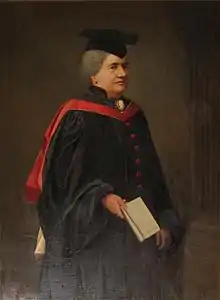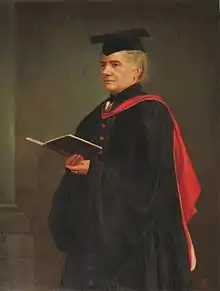Agnes and Margaret Smith
Agnes Smith Lewis (1843–1926)[1] and Margaret Dunlop Gibson (1843–1920),[2] nées Agnes and Margaret Smith (sometimes referred to as the Westminster Sisters), were Arabic, Christian Palestinian Aramaic, and Syriac language scholars. Born the twin daughters of John Smith of Irvine, Ayrshire, Scotland, they learned more than 12 languages between them, and became acclaimed scholars in their academic fields, and benefactors to the Presbyterian Church of England, especially to Westminster College, Cambridge.

Agnes Lewis's discovery of the Syriac Sinaiticus (Old Syriac Gospels), on her first journey to Sinai (1892), was one of the most important palimpsest manuscript find since that of the Codex Sinaiticus in 1859 by Constantin von Tischendorf next to the Syriac Curetonian Gospels, today British Library. Her second most valuable attribution to the field of Aramaic (Christian Palestinian Aramaic, Syriac) studies and New and Old Testament text critique was the purchase of another unique palimpsest manuscript the Codex Climaci Rescriptus in Egypt (Cairo 1895; Port Tewfik 1906) and the largest batch from an unknown Berlin (Germany) scholar (1905), containing underneath several individual manuscripts in Christian Palestinian Aramaic of various lectionaries with Gospels, Epistles and Old Testament pericopes, an early apocryphal text Dormition of Mary with the hagiographic story of Peter and Paul (6th century),[3][4] and Greek with Gospels (7th/8th centuries),[5] overwritten by the Syriac translation of scala paradisi and liber ad pastorem by the monk John Climacus of Sinai, of which now surfaced the missing quire at Saint Catherine’s Monastery.[6][7]
Personal life and education
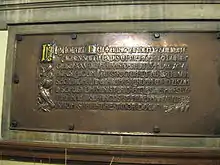
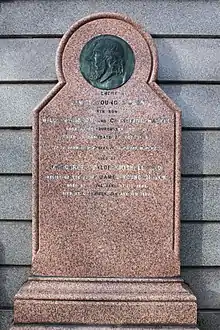
Agnes and Margaret Smith, twins, were born on 11 January to Margaret Dunlop and John Smith, a solicitor and amateur linguist. Their mother died two weeks after their birth, and they were brought up by nannies, a governess, and their father.[8][1][2] They were educated in private schools in Birkenhead, Cheshire and Kensington, London (1853–62),[1][2] interspersed with travels in Europe guided by their father.[9]
After their father's death, they settled in London and joined the Presbyterian church in Clapham Road.[10] Already conversationally fluent in German, French and Italian,[11] they continued to learn languages and travelled in Europe and the Middle East, including travelling up the Nile and visiting Palestine in 1868.[12] In 1870, Agnes wrote Eastern Pilgrims, an account of their experiences in Egypt and Palestine.[13]
In 1883, the twins, by then also quite fluent in Greek, travelled to Athens and other parts of Greece.[14] beginning a lifelong affectionate relationship with Greek Orthodoxy, whose monks occupied Saint Catherine's Monastery at Sinai. On 11 September 1883, Margaret married James Young Gibson, a scholar trained for the ministry, but then working on translations;[15] and in 1887, Agnes married Samuel Savage Lewis, librarian of Corpus Christi College, Cambridge.[16][17] Samuel had also trained as a clergyman. Each marriage was soon ended with the death of the husband.[18] Margaret's marriage only lasted slightly over three years.[19]
She is buried with her husband in Dean Cemetery in western Edinburgh. The grave lies on the north wall of the first northern extension to the main cemetery.
Academic work
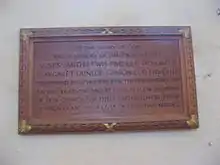
By 1890, the sisters settled in Cambridge. Agnes began to study Syriac (Margaret took it up later, in 1893,[20]) and improve their Arabic, which Agnes had begun to learn in 1883.[15] Enthused by Quaker and Orientalist J. Rendel Harris's account of his discovery at Saint Catherine's Monastery of a Syriac text of the Apology of Aristides they travelled to the monastery in 1892, and discovered one of earliest Syriac version of the Old Syriac Gospels next to the earlier known Curetonian Gospels. The year after (1883), they returned with three Cambridge scholars that included Professor Robert L. Bensly and Francis C. Burkitt, and their wifes, as well as J. Rendel Harris, to copy the whole of the manuscript, known as the Syriac Sinaiticus or the Sinaitic Manuscript (Lewis),[21] which enlightened the Syriac transmission and added valuable variants to New Testament studies.[22] The palimpsest manuscript was found to have been overwritten by the Lives of Holy Women in Syriac dated to 779 CE by John the Recluse as well as also having four 6th century folios with a Syriac witness of the Departure of Mary (Transitus Mariae) underneath.[23][24] During this expedition, both sisters also catalogued the monastery's valuable collection of Syriac and Arabic manuscripts.[1][2][25]
In their travels to Egypt, Agnes S. Lewis and Margaret D. Gibson were also able to buy among other unique manuscripts in Christian Palestinian Aramaic as e.g. an hagiographic palimpsest manuscript The Forty Martyrs of Sinai, and Eulogios the stone-cutter from the 6th–7th century (1906) overwritten by a Christian Arabic text (8th century);[26][27] a nearly complete eleventh-century lectionary (1895)[28] of Christian Palestinian Aramaic with noteworthy biblical pericopes in 1895 and later 1905 some of the missing folios from a German collector (Westminster College, Cambridge);[29][30] several leaves under Syriac Christian homilies where Agnes S. Lewis detected separate 7th and 8th century Qu'ranic manuscripts, which she and Alphonse Mingana dated as possibly pre-Uthmanic.[31][32][33] These palimpsest folios were lent to the exhibition “Internationale Ausstellung für Buchgewerbe und Graphik" in Leipzig 1914, and due to the outbreak of the First World War they were only returned in 1936 after the successful intervention by Paul Kahle.[34] They collected about 1,700 manuscript fragments, now known as the Lewis-Gibson collection, including some formerly of the Genizah of the Bin Ezra Synagogue in Old Cairo.[35] The sisters continued to travel and write until the First World War, and were behind other discoveries through acquisition, including that of an early Hebrew manuscript of Ecclesiasticus in the Cairo Genizah, identified by Solomon Schechter.[36][37][38]
J. Rendel Harris's Cambridge course in palaeography allowed Agnes S. Lewis to step onto the academic stage as a Syriac scholar "of international repute",[39] as author of the introduction to the expedition team's 1894 publication of a translation of the palimpsest. Though the University of Cambridge never honoured the two scholarly twins with degrees (it did not admit women to degrees until 1948), they received honorary degrees[nb 1] from the universities of Halle, Heidelberg,[1][2][40] Dublin, and St Andrews,[1][2][41] and both were honoured in addition with the Triennial gold medal of the Royal Asiatic Society, the blue riband of oriental research in 1915.[1]
At Cambridge, they attended St Columba's Church.[42] They were generous hostesses at their home, Castlebrae, which became the centre of a lively intellectual and religious circle.[43]
Benefaction
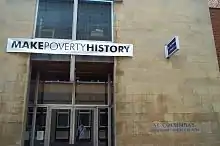
The sisters used their inheritance to endow the grounds and part of the buildings of Westminster College in Cambridge.[1] This was long after Nonconformists were allowed to become full members of the Oxbridge universities by the repeal of the Test and Corporation Acts; and that Presbyterian college moved from Queen Square, London to a site acquired from St John's College, Cambridge in 1899. They also helped the establishment of the Presbyterian chaplaincy to the University of Oxford, now at St Columba's United Reformed Church, Oxford.
Works
Agnes Smith Lewis
- Eastern Pilgrims: The travels of three ladies (London, 1870)
- Effie Maxwell (London, 1876) (a novel)
- The Brides of Ardmore: A story of Irish life (London, 1880)
- Through Cyprus (London, 1887)
- Glimpses of Greek Life and Scenery (London, 1884)
- Catalogue of the Syriac MSS. in the Convent of S. Catharine on Mount Sinai (London, 1894)
- A Translation of the Four Gospels from the Syriac of the Sinaitic Palimpsest (London and New York, 1894)
- A Translation of the Four Gospels from the Syriac of the Sinaitic Palimpsest (London, 1896) (revised and extended edition)
- Some Pages of the Four Gospels Re-transcribed from the Sinaitic Palimpsest with a Translation of the Whole Text (London, 1896)
- In the Shadow of Sinai: A story of travel and research from 1895 to 1897 (Cambridge, 1898)
- Select Narratives of Holy Women: From the Syro-Antiochene or Sinai Palimpsest (London, 1900)
- Apocrypha Syriaca: The Protevangelium Jacobi and Transitus Mariae (London, 1902, with Alphonse Mingana)
- Acta Mythologica Apostolorum (London, 1904) (Texts; English translation)
- Supplement to a Palestinian Syriac Lectionary (Cambridge, 1907)
- Codex Climaci Rescriptus: Fragments of the Sixth-Century Palestinian Syriac Texts of the Gospels, of the Acts of the Apostles, and of St Paul’s Epistles (London, 1909)
- The Old Syriac Gospels or Evangelion da-Mepharreshê (London, 1910)
- The Forty Martyrs of the Sinai Desert and the Story of Eulogius from a Palestinian Syriac and Arabic Palimpsest (Cambridge, 1912)
- Light on the Four Gospels from the Sinai Palimpsest (London, 1913)
- Leaves From Three Ancient Qur'ans; Possibly Pre-Othmanic (Cambridge, 1914, with Alphonse Mingana)
Margaret Dunlop Gibson
- How the Codex Was Found: A narrative of two visits to Sinai from Mrs. Lewis's journals, 1892 – 1893 (Cambridge, 1893)
- An Arabic Version of the Epistles of St. Paul to the Romans, Corinthians, Galatians with part of the Epistle to the Ephesians from a ninth century MS. in the Convent of Saint Catharine on Mount Sinai. Studia Sinaitica II (London, 1894).
- Catalogue of the Arabic mss. in the Convent of Saint Catharine on Mount Sinai. Studia Sinaitica III (London, 1894).
Agnes Smith Lewis and Margaret Dunlop Gibson
Archives
A collection of scrapbooks of press cuttings relating to Agnes Smith Lewis and Margaret Dunlop Gibson can be found at the Cadbury Research Library, University of Birmingham.[44]
Footnotes
References
- Müller-Kessler, Christa (2004), Dunlop Gibson, née Smith (1843–1920), in Oxford Dictionary of the National Biography, vol. 22. Oxford: Oxford Press, pp. 89–90. https://doi.org/10.1093/ref:odnb/55585.
- Müller-Kessler, Christa (2004), Lewis, Agnes Smith (1843–1926), in Oxford Dictionary of the National Biography, vol. 33. Oxford: Oxford Press, pp. 579–580. https://doi.org/10.1093/ref:odnb/34510.
Bibliography
- Whigham Price, Alan (1964), The Ladies of Castlebrae. The Life of Dr. Agnes Smith Lewis and Dr. Margaret Dunlop Gibson (Annual Lecture to the Presbyterian Historical Society, October 1964; University of Durham. Durham.
- Whigham Price, Alan (1985), The Ladies of Castlebrae. London: Headline Book Publishing. ISBN 0-86299-228-1
- United Reformed Church (2004), A Gift Box ISBN 0-85346-222-4.
- Cornick, D. and C. Binfield (editors) (2006) From Cambridge To Sinai United Reformed Church. ISBN 978-0-85346-251-4
- Jefferson, Rebecca J. W. (2009) "Sisters of Semitics: A Fresh Appreciation of the Scholarship of Agnes Smith Lewis and Margaret Dunlop Gibson" in Medieval Feminist Forum 45/1, 23–49
- Soskice, Janet (2009), Sisters of Sinai: How Two Lady Adventurers Found the Hidden Gospels London: Vintage ISBN 978-1-4000-3474-1
- Brock, Sebastian P. (2014), Agnes Lewis (1843–1926) and Margaret Gibson (1843–1920), in Predrag Bukovec (ed.), Christlicher Orient im Protrait – Wissenschaftsgeschichte des Christlichen Orients. Religionen im Vorderen Orient (RVO) 2. Hamburg: Dr. Kovač, pp. 267–280. ISBN 978-3-8300-7812-8
Citations
- Christa Müller-Kessler, Lewis, Agnes Smith (1843–1926), in Oxford Dictionary of the National Biography, vol. 33 (Oxford, 2004), pp. 579–580
- Christa Müller-Kessler, Dunlop Gibson, née Smith (1843–1920), in Oxford Dictionary of the National Biography, vol. 22 (Oxford, 2004), pp. 89–90.
- Agnes Smith Lewis (ed.), Codex Climaci Rescriptus: Fragments of the Sixth-Century Palestinian Syriac Texts of the Gospels, of the Acts of the Apostles, and of St Paul’s Epistles (London, 1909), pp. XI–XVI.
- Christa Müller-Kessler, An Overlooked Christian Palestinian Aramaic Witness of the Dormition of Mary in Codex Climaci Rescriptus (CCR IV), Collectanea Christiana Orientalia 16, 2019, pp. 81–98.
- Ian A. Moir, Codex Climaci rescriptus grecus (Ms. Gregory 1561, L), Texts and Studies NS, 2 (Cambridge, 1956).
- Sebastian P. Brock, The Syriac ‘New Finds’ at St. Catherine’s Monastery, Sinai and Their Significance, The Harp 27, 2011, pp. 48–49.
- https://sinai.library.ucla.edu
- Register of Births of the Town and Parish of Irvine: 1843, at ScotlandsPeople.gov.uk
- Soskice, p.25
- Soskice, p. 56
- Soskice, p. 29
- Soskice, pp. 33- 51
- Soskice, p.56
- Soskice, p.67
- Soskice, p.71
- Soskice, p.91
- Soskice, p.84 (Gibson), p.107 (Lewis)
- Gemmill, J.A. Note on the probable origin of the Scottish surname of Gemmill or Gemmell. p. 30. ISBN 9785872175735. Retrieved 13 April 2015.
- Soskice, p. 207
- Margaret Dunlop Gibson, How the Codex was Found (Cambridge, 1895), pp. 60–67.
- Bruce M. Metzger, The Syriac Versions: III. The Old Syriac Versions, in The Early Versions of the New Testament (Oxford, 1977), pp. 36–47.
- Sebastian P. Brock, Grigory, Kessel, The ‘Departure of Mary’ in Two Palimpsests at the Monastery of St. Catherine (Sinai Syr. 30 & Sinai Arabic 514), Christian Orient: Journal of Studies in the Christian Cultures of Asia and Africa 8 (2017), pp. 115-152.
- .
- Sebastian P. Brock, Agnes Lewis (1843–1926) and Margaret Gibson (1843–1920), in Predrag Bukovec (ed.), Christlicher Orient im Protrait – Wissenschaftsgeschichte des Christlichen Orients. Religionen im Vorderen Orient (RVO) 2. (Hamburg, 2014), pp. 267–280.
- The Forty Martyrs of the Sinai Desert and the Story of Eulogius from a Palestinian Syriac and Arabic Palimpsest (Cambridge, 1912), p. V.
- Tiny fragments of the beginning of the manuscript and one folio from the middle were in the hands of a German collector; see Friedrich Schulthess, Christlich-Palästinische Fragmente, Zeitschrift der Deutsche Morgenlândischen Gesellschaft 56, 1902, pp. 257–261.
- The last seven were in the hand of a German collector and are now stored in the Niedersächsische Staats- und Universitätsbibliothek Göttingen, Germany.
- Agnes Smith Lewis and Margaret Dunlop Gibson, Palestinian Syriac Lectionary containing Lessons from The Pentateuch, Job, Proverbs, Prophest, Acts, and Epistles (London, 1897).
- Agnes Smith Lewis, Supplement to a Palestinian Syriac Lectionary (Cambridge, 1907), p. 4.
- A. George, Le palimpseste Lewis-Mingana de Cambridge: Témoin ancien de l’histoire du Coran, Compte rendue de séances l’Académie des Inscriptions et Belles Lettres 2011, pp. 377–429.
- "Mingana-Lewis Palimpsest: Christian Arabic homilies of the Church Fathers". Cambridge Digital Library. Retrieved 24 April 2016.
- Mingana, Alphonse; Smith Lewis, Agnes (1914). Leaves From Three Ancient Qur'ans; Possibly Pre-Othmanic, with a list of their variants. Cambridge: Cambridge University Press. pp. vii–viii..
- Letter by Meredith-Owen, Dept. of Oriental Printed Books and Manuscripts, The British Museum of July 1957.
- Lewis-Gibson collection.
- Agnes Smith Lewis, In the Shadow of Sinai. A Story of travel and Research from 1895–1897 (Cambridge, 1898), pp. 160–162
- Paul Kahle, The Cairo Geniza: The Schweich Lectures of the British Academy 1941 (London, 1947), pp. 6, 40
- Soskice, pp. 235–252.
- Soskice, p. 216
- Soskice, p.280
- Soskice, p.271
- Soskice, p.282
- Alan Whigham Price (1985), The Ladies of Castlebrae (London: Headline Book Publishing), pp. 162–183.
- "UoB Calmview5: Search results". calmview.bham.ac.uk. Retrieved 15 January 2021.
